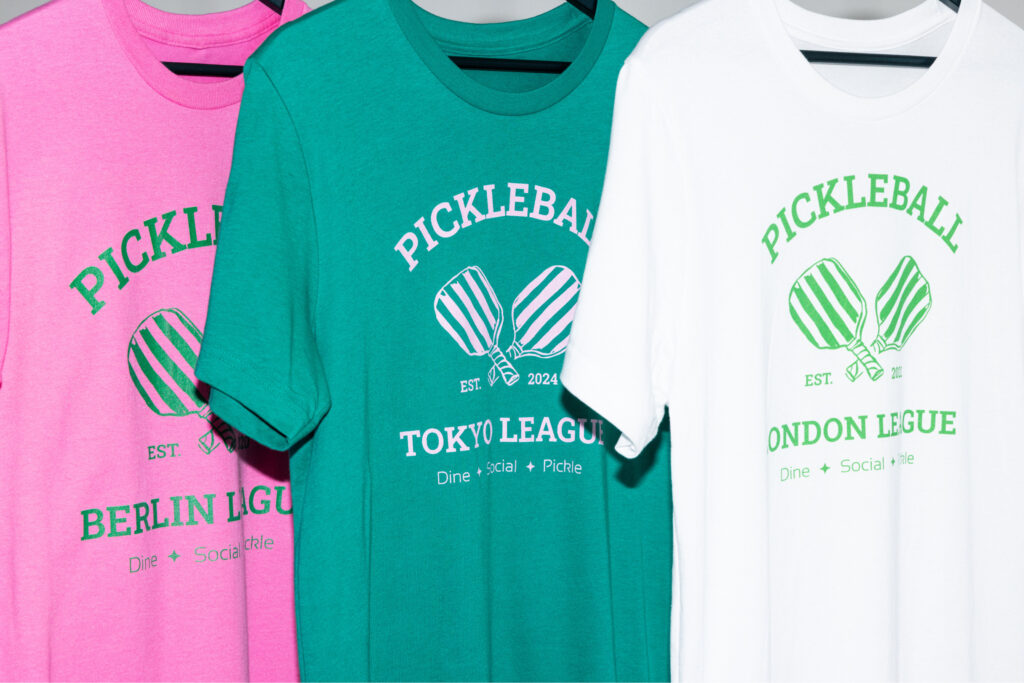Turn passion into profit with Printify
Blogging isn’t just a creative outlet – it can be a serious income stream. But how do bloggers make money, and is it really worth the effort?
Whether you’re looking for a side hustle, a full-time career, or a way to expand an existing online business, we’ll break down how to make money blogging with 10 strategies that actually work.
This post may contain affiliate links, which means we may earn a commission if you make a purchase through those links. This comes at no additional cost to you.
How much money can you make blogging?
Blogging is a great way to earn money, but how much you make depends on your niche, audience, and monetization strategy. While some bloggers use it as a side hustle, others turn it into a full-time business.
On average, bloggers earn around $62,275 per year, but income varies widely. Some successful bloggers in personal finance or food niches make over $9,000 per month.
While blogging income isn’t guaranteed, choosing a profitable niche and finding diverse ways to make money – like affiliate marketing, ad sales, and digital products – can significantly improve earnings.
Explore the best blogging platforms to make money.
10 ways to make money blogging
There’s no single way to make money blogging – a successful blog often has multiple revenue streams to maximize earnings. Whether you’re just starting or looking to scale, the key is to build an engaged audience and monetize strategically.
Here are 10 proven ways to make money with your blog.
1. Identify a high-demand niche
Choosing the right niche is one of the most important steps in building a profitable blog. A niche is a focused topic within a broader category – like plant-based fitness instead of general health and wellness.
The more specific and in-demand your niche, the easier it is to attract a loyal audience and make more money with your blog.
Think about blog topics you’re passionate about, but also research whether they have a high earning potential.
Some niches, like finance, tech, and health, can be more lucrative due to high-paying affiliate programs and ad revenue. Others, like personal blogs or broad lifestyle content, can be harder to monetize.
To find the right niche, consider these questions:
- What do you enjoy writing about?
- Is there a clear audience searching for this content?
- Do businesses in this space spend money on advertising or affiliate programs?
Browse our article on how to start a business with no money for inspiration.
2. Establish credibility in your field
Readers and brands are more likely to trust and work with bloggers who establish themselves as experts.
Here are a few ways to become an authority in your niche and make money with your blog:
- Showcase real expertise – If you have professional experience or credentials, share them on your blog and social media. Case studies, in-depth research, and personal insights set you apart from competitors.
- Guest post on high-authority sites – Writing for well-known blogs and industry websites exposes you to a wider audience and enhances your blog’s credibility.
- Leverage data and research – Referencing studies, conducting original research, or even running small experiments within your niche makes your content more trustworthy.
- Engage with thought leaders – Interviewing experts or collaborating with influencers strengthens your content and helps build valuable connections.
- Be consistent – Post regularly and provide high-quality, well-researched content. Stay updated on industry trends and always fact-check your work.
- Collect testimonials – Build social proof by asking for testimonials from loyal readers to reinforce your credibility.
3. Leverage multiple channels to grow your blog

No matter how great your content is, you won’t make money blogging unless people find you. That’s why marketing is just as important as content creation.
Grow your audience and increase your revenue potential using a combination of strategies like email marketing, search engine optimization (SEO), and social media.
Build an email list
Engage readers and drive traffic back to your blog with targeted newsletters. Unlike social media, where algorithms control visibility, email campaigns let you reach subscribers directly:
- Use pop-ups and opt-in forms on your blog to collect emails.
- Offer lead magnets like free eBooks, templates, or exclusive blog posts.
- Send valuable content consistently, like weekly or every two weeks.
- Avoid spammy tactics. Focus on providing useful insights that keep subscribers engaged.
Focus on SEO
Want your blog to rank higher on search engines and make it easier for readers to find your content?
Start by doing keyword research using tools like Semrush or Google Keyword Planner to drive organic traffic. Focus on long-tail keywords, which are more specific and easier to rank for.
Then, optimize your posts by:
- Writing clear, structured content with relevant keywords, headings, and subheadings.
- Adding internal links to keep readers on your site longer.
- Improving site speed and mobile-friendliness.
- Using compelling meta descriptions to improve click-through rates.
Use social media strategically
Linking your blog on social media can attract readers to your site, but that’s not enough to drive significant traffic.
Tailor your content for each platform to get the best results:
- Instagram and TikTok – Share visuals or short-form videos with blog highlights.
- Pinterest – Create SEO-friendly pins to drive long-term traffic.
- LinkedIn – Share expert knowledge and engage in relevant discussions.
- Facebook – Build a dedicated group or page where readers can interact with your content.
Engage with online communities
Forums, Facebook groups, Reddit, and Quora are great places to connect with potential readers.
Answer relevant questions, share insights, and link to your blog when appropriate. Consistent participation can establish you as a trusted voice in your niche.
Collaborate with other bloggers
Networking helps expand your reach for better blog visibility. Try these approaches:
- Writing guest posts for established sites in your niche.
- Engaging in cross-promotions, like sharing each other’s content.
- Partnering on webinars, podcasts, or interviews.
Repurpose content for multiple platforms
Don’t limit your audience with just long-form blog posts – consider expanding your reach by launching a YouTube channel or Spotify podcast.
Repurposing your articles into different content formats can help you build stronger engagement and unlock new ways to make money:
- Turn blog posts into YouTube videos or podcasts.
- Create infographics or carousel posts for Instagram and LinkedIn.
- Compile key takeaways to share as X threads.
While growing a blog takes time, combining these strategies will help you drive steady traffic to make money with your blog.
4. Partner with brands for affiliate earnings

Recommending products or services relevant to your niche is one of the most accessible ways to make money blogging. Affiliate marketing lets you earn a commission when readers purchase through your unique link.
Choose the right affiliate programs
Some give higher commissions, while others might offer better conversion rates. To find the best affiliate programs for your blog, start by exploring these platforms:
- Amazon Associates – Has a broad range of products but lower commission rates.
- ShareASale and CJ Affiliate – Connects you with well-known brands across multiple industries.
- Impact and Rakuten – Great for partnering with large retail brands.
- Specialized high-ticket programs – Software, finance, or luxury goods can offer higher commissions.
The key is to promote products that genuinely align with your audience’s interests and needs. So, look for programs that pay well and have products that naturally fit your content.
Create valuable content
Affiliate marketing works best when it feels natural. Instead of stuffing links randomly, integrate them into high-value content:
- Product reviews and comparisons – Help readers decide between similar options.
- How-to guides – Teach readers how to solve a problem using the affiliate product.
- Resource lists – Round up must-have tools, books, or software in your niche.
The goal is to recommend products in a way that makes readers trust your suggestions and click through.
Optimize for conversions
To maximize affiliate earnings, follow these best practices:
- Disclose affiliate relationships – Be transparent about using affiliate links.
- Use deep links – Link directly to relevant product pages instead of generic homepages.
- Test different placements – Try linking within the content, adding banners, or using call-to-action buttons.
- Track performance – Use analytics to see which linking strategies drive the most revenue and adjust accordingly.
Affiliate marketing isn’t instant money, but with the right approach, it can become a reliable revenue stream that grows as your audience expands.
Explore the best affiliate programs for beginners.
5. Write sponsored posts and brand collaborations
Brands are always looking for ways to reach new audiences, making it the perfect opportunity for bloggers to offer valuable exposure through sponsored content.
This is when a company pays you to feature their product or service in a way that resonates with your audience.
Find the right sponsorship opportunities
While some brands may reach out to you as your blog grows, you can find opportunities by:
- Pitching brands directly – Reach out to companies that align with your niche and explain how a collaboration can benefit them.
- Signing up for influencer networks – Platforms like Aspire, Influence.co, and Clever help connect bloggers with brands looking for sponsorships.
- Showcasing past collaborations – If you’ve partnered with brands before, feature them on a “Work With Me” page to attract potential offers.
Create engaging sponsored content
Maintain your credibility and keep readers engaged with posts that feel natural and useful. Instead of writing a sales pitch, try formats like:
- Personal stories – Share how the product fits into your life or solves a real problem.
- Tutorials and demos – Show your audience how to use the product practically.
- Comparisons and listicles – Feature the sponsored product alongside similar options and demonstrate why it’s the better choice.
Maintain trust with your audience
Readers can tell when a post is overly promotional, so make sure to:
- Be selective – Only work with brands offering high-quality products that fit your niche.
- Be transparent – Clearly disclose that a post is sponsored to comply with FTC guidelines.
- Give an honest opinion – Even in a paid collaboration, share the pros and cons of a product.
By choosing the right partnerships and keeping your content valuable, sponsored posts can become a consistent revenue stream while maintaining your blog’s authenticity.
6. Sell downloadable resources
Selling digital products is a scalable way to make money blogging without the hassle of inventory, shipping, or ongoing production costs.
The best part? Once you create a digital product, you can sell it indefinitely – making it an excellent source of passive income.
Choose the right digital products
Depending on your target audience and blog content, here are some options to consider:
- eBooks – Long-form guides that dive deep into a subject that resonates with readers.
- Printables – Templates, planners, or checklists that help users stay organized.
- Workbooks – Interactive PDFs that complement educational content.
- Online courses – Structured lessons that teach a skill or topic in detail.
- Exclusive reports or research – Data-driven insights that professionals in your field can use.
Validate demand before creating
Make sure there’s interest before creating a digital product. Try these methods to gauge demand:
- Run a poll or survey to ask readers what resources they need.
- Check other bloggers in your niche to see what they’re offering.
- Create a free product and see if it gets downloads before offering a more comprehensive, paid version.
Set up a seamless sales process
To successfully sell digital products:
- Use eCommerce plugins like WooCommerce (for WordPress) or Shopify’s Digital Downloads.
- Create a landing page to explain the product’s value and convert customers.
- Promote it via email, blog posts, and social media.
Bundle products for higher sales
If you have multiple digital products, consider offering bundles at a discounted rate.
For example, a travel blogger can sell a “Complete Travel Planning Toolkit” with an itinerary template, packing list, and budget planner. This increases the perceived value and encourages larger purchases.
7. Earn through ad placements

Displaying ads on your own blog is one of the most straightforward ways to make money online. While you need steady blog traffic for it to become lucrative, ad placements can provide consistent revenue with minimal ongoing effort.
Choose the right ad network
Advertising channels help connect companies to your blog. Some popular options include:
- Google AdSense – Easy to set up but typically has lower earnings per click.
- Mediavine – Requires at least 50,000 monthly sessions but offers higher revenue potential.
- Raptive (formerly AdThrive) – Best suited for high-traffic blogs with over 100,000 monthly pageviews.
Optimize ad placement
Maximize ad earnings by implementing these strategies on your blog:
- Test different locations – Ads placed above the fold (visible without scrolling) or within an article tend to perform best.
- Use responsive ads – Make sure ads display seamlessly on mobile and desktop.
- Avoid overcrowding – Too many ads can hurt the user experience and slow down your site.
Increase traffic for better ad revenue
Since ad networks pay based on impressions (RPM) or clicks (CPC), more traffic means more earnings with this income stream.
Improve your blog’s reach by writing high-quality, optimized content to rank on search engines and promoting posts on your social media accounts.
Explore direct ad sales
Beyond advertising networks, you can negotiate directly with brands to sell ad space on your blog. This lets you set your own rates and earn more per placement than ad networks typically offer.
8. Create exclusive paid content
For loyal readers who want more than your usual blog posts, offering paid memberships or subscription-based content can be a great way to make money with your blogging efforts.
What kind of exclusive content can you offer?
The key to monetizing premium content is to offer something unique and valuable that readers can’t get elsewhere. Aside from downloadable products, create content like expert interviews, webinars, or live Q&A sessions.
Community-based resources are also a great way to foster a loyal following. Consider starting an exclusive forum, Slack group, or Discord channel where members can interact and get support.
Set up a membership model
There are different ways to charge for premium content:
- Subscription-based – Readers pay a recurring monthly or yearly fee for access. Try platforms like Patreon or Substack.
- One-time payment – Charge for individual guides, courses, or workshops instead of an ongoing subscription.
- Tiered memberships – Offer different access levels, with higher tiers unlocking more content and perks.
How to get people to subscribe
- Offer a free sample or teaser of your own products to show their value.
- Promote memberships within your posts and across marketing channels.
- Provide discounts for annual subscriptions to encourage long-term sign-ups.
- Continuously update exclusive posts to keep members engaged and renewing their subscriptions.
Read our guide on how to make money from home.
9. Offer services

Consulting or coaching is a fantastic way to monetize your knowledge as a professional blogger, whether through one-on-one sessions, group coaching, or business consulting.
Identify your consulting niche
Your blog content already signals your expertise. Now, think about how you can package that into a paid service. Here are a few ideas:
- Business consulting services – Help companies optimize marketing, sales, or strategy.
- Personal coaching – Offer career, fitness, or mindset coaching.
- Offer freelance services – Think content writing, SEO, or branding strategy.
Set up your consulting business
Attract readers and potential customers by:
- Creating a service page – Outline what you offer, who it’s for, and how clients can book you.
- Using scheduling tools – Platforms like Calendly or Acuity Scheduling automate bookings and payments.
- Offering free discovery calls – A short introductory session can help convert potential clients.
10. Sell physical products

If your blog has a decent following and a clear brand identity, selling merchandise or niche products can be a great way to monetize.
Start with Print on Demand
Print-on-demand services like Printify help you sell products without holding inventory or managing shipping.
With a Catalog of over 1,300 customizable items and an easy-to-use Product Creator, sell everything from branded t-shirts and mugs to stickers with your blog slogans.
You can also create niche-specific products – for example:
- Fitness blog – Workout gear like gym bags and leggings.
- Travel blog – Travel accessories like charging pads and backpacks.
- Food blog – Recipe books and aprons.
- Photography blog – Presets, postcards, or framed prints.
- Personal development blog – Planners or guided journals.
Get started for free by registering a Printify account, connecting a sales channel, and publishing your products seamlessly.
Promote your store through your blog
To drive sales, feature your products in blog posts, link your store in the navigation menu, and offer special discounts to subscribers.
Selling merchandise can be a natural extension of your blog, letting readers support you while getting a great product in return. To attract purchases, create limited edition or seasonal items to generate urgency and exclusivity.
Read our in-depth blog post on other creative ways to make money.
FAQ: How to make money blogging
Start by choosing a profitable niche, setting up your blog on a platform like WordPress, and creating high-quality content. Grow your audience through SEO, social media, and email marketing, and start monetizing with affiliate links, ads, and custom products.
New blog owners can make money blogging using monetization strategies like affiliate marketing, sponsored posts, and selling digital products like online courses.
Print-on-demand merch is also a great way to have more control over your revenue streams and make more money.
Yes, many bloggers earn full-time incomes, but success requires time, consistency, and a solid monetization strategy.
Some beginner bloggers make a few hundred dollars per month, while a popular blog can earn six figures through a mix of affiliate marketing, sponsored posts, digital products, and memberships.
How fast you can make money with a blog depends on your niche, content strategy, and traffic growth. Most bloggers start making $1,000 per month within six to 12 months, but it can take longer.
Focusing on SEO, high-commission affiliate programs, and consistent content production can speed up the process.
Earnings per 1,000 views vary based on the monetization methods. With display advertising, blogs typically earn $5-$50 per 1,000 views (RPM). If you do affiliate marketing or sell downloadable resources, revenue can be higher depending on conversion rates.
WordPress is the most popular platform for monetization because it offers bloggers full control over design, plugins, and revenue streams.
Other platforms like Wix, Squarespace, and Medium also work, but they might have more restrictions on ad networks and customization.
How to make money with a blog: Final thoughts
Making money blogging takes time, but it’s entirely possible with the right niche, a strong content strategy, and a profitable business model.
Focus on growing your audience, experimenting with multiple methods to make money, and refining your business strategy. The more value you provide, the more opportunities you’ll have to build a high-earning blogging business.
Want to sell custom merch on your blog? Use Printify for a hassle-free experience – no upfront costs or inventory, just high-quality products and sweet profits.












